I've read the other posts on segues but none solve my question.
Simply put, my ViewControllers are ordered, like a book. I want backward transitions (example: from page 9 to 8) to always present (slide over) from left to right. I want forward transitions (from page 9 to 10) to present from right to left.
Yes, my nav-controller back button (top left) presents like this if you are paging through page by page. However, if you jump in from an Index then the back function on the nav controller takes you back to the index.
My objective is that if a user jumps to page 9 (for example) from an index, then swipes right, it'll flick the page off to the right and show page 8. Once on page 8, if they flick left the page will get flicked off to the left and they'll be on page 9 again.
All my ViewControllers are by, default, presenting by sliding in from right to left.
Example: Think of it like a book, if I use the Index to hop to chapter 4, then swipe right and pop a view from the stack, I'll be back at the Index. But if you're on Chapter 4, page 394 and you swipe right, you don't want to go back to the index! You want to go to the last page of chapter 3, page 393! So the nav stack is no help to me.
End Example
Details: 1. I'm using the new Xcode "Show" on button-tap to switch between ViewControllers.
I'm using a navigation controller, for the top-left "Back" button functionality. This uses the nav stack and works fine.
However I have my own custom nav-bar at the bottom (Back Button, Home Button, Index Button, Forward Button) and gestures. These are what I want to have book-like functionality with.
Coding in swift.
Working with Xcode 6.3
I've read that there's animation code. I've read there's in depth programatic transitions that can be used. It just seems crazy that there's no simple way to just select the segues I want to present from the left and easily reverse the animation.
Thanks!
Attempt log:
I tried DCDC's code:
UIView.transitionWithView(self.window!, duration: 0.5, options:.TransitionFlipFromLeft, animations: { () -> Void in
self.window!.rootViewController = mainVC
}, completion:nil)
This error is returned when I insert DCDC's code into an IBAction for my back-swipe
